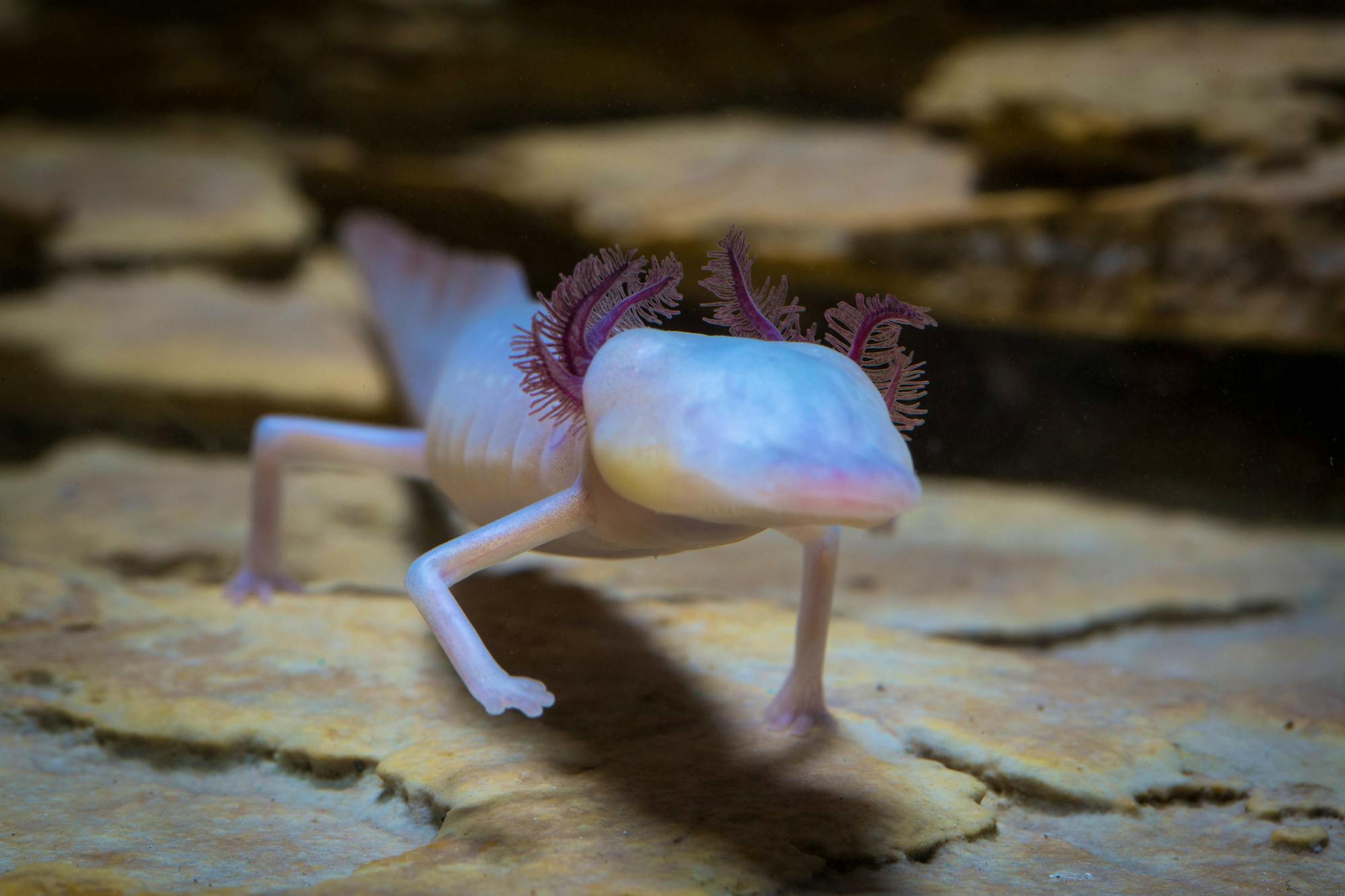Nestled in the heart of the Lone Star State stands a testament to nature’s grandeur: the Texas Hill Country. Beyond its rolling hills and expansive landscapes flows a network of waterways and streams that contribute to the area's scenic beauty and support a myriad of endemic and rare wildlife. Some of the unique aquatic indicator species, however, show us the imperative need for habitat restoration.
Water quality is a paramount concern in Hill Country because of its impact on the health of the diverse wildlife relying on these waterways. Conservationists monitor and implement measures to improve water quality to ensure the ecosystem remains robust and resilient.
Texas Treasures
Some of the native species in Hill Country waterways are found nowhere else in the world. This includes Texas Treasures, or imperiled aquatic wildlife, like four elusive salamanders and three blindcat fish. These species have specific and important roles in their ecosystems. Salamanders, like the Austin and Texas blind salamanders, help control insect populations. Eyeless catfish, including the Toothless and Widemouth blindcats, are top predators who dwell in the depths of the region’s aquifers. When these animals are thriving, it’s an indication the surrounding ecosystem is also healthy.
Because these species’ range is so limited, protecting their habitat and keeping waterways clean and healthy is critical to preventing their extinction. Currently, habitat loss and water quality degradation are, unfortunately, the top threats to all these water-dependent creatures.
Habitat Restoration
Habitat restoration is a multifaceted conservation approach that goes beyond preserving the existing landscape. It can recreate lost habitats, create wildlife corridors and keep waterways free of pollutants. It also can focus on removing pollutants from an ecosystem and may sometimes include invasive species removal. If done well, habitat restoration can help ensure the delicate balance of an ecosystem is maintained for generations to come.
Get Involved
Community involvement is also a key component to habitat restoration. Local residents can participate in initiatives, like the one Defenders of Wildlife and its partners is hosting on February 19 in Austin, TX, to reduce pollution and promote sustainable water usage. If you are interested in learning more and participating in our riparian habitat cleanup day in Austin RSVP today or at the latest by February 18.
All waterways are connected, from tiny streams in the Hill Country to winding rivers along our borders. Even if you are not in salamander or blindcat fish habitat, your litter and pollution can harm these treasures. We all can be mindful of our impact on waterways and ensure a future for our local wildlife and their habitats!







